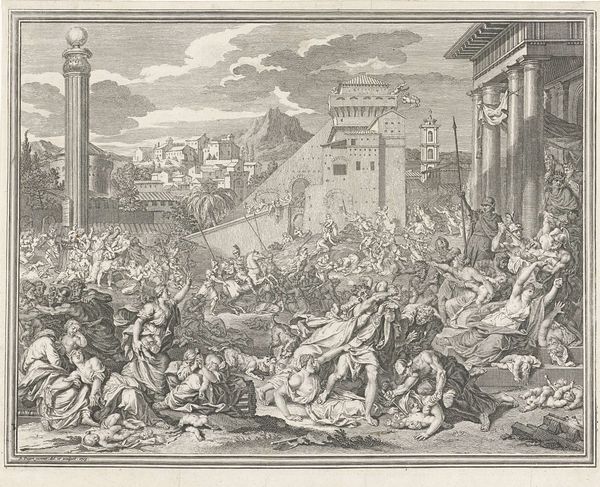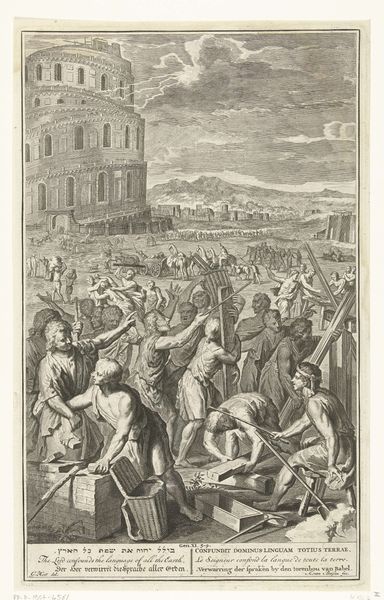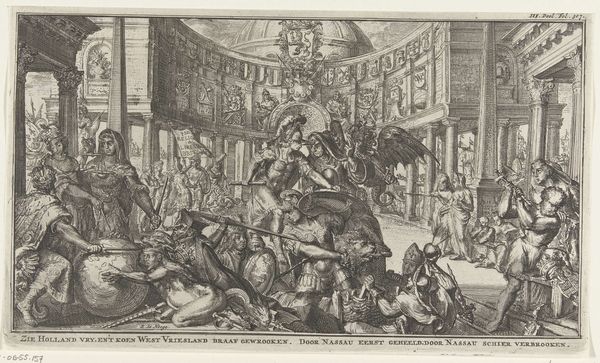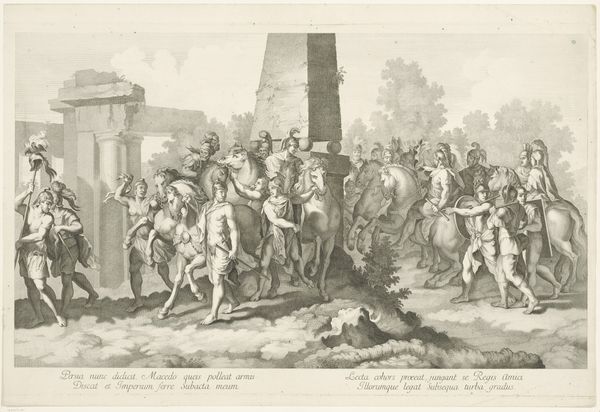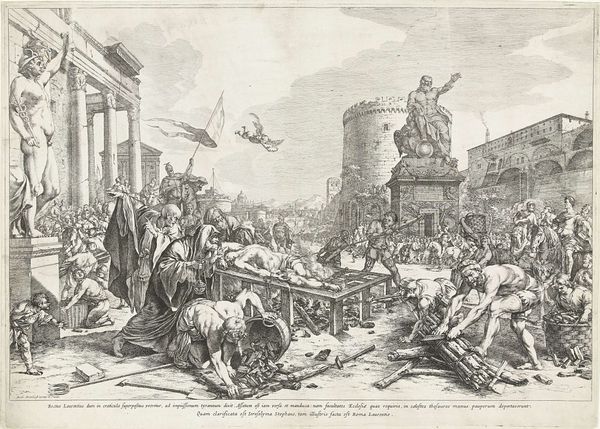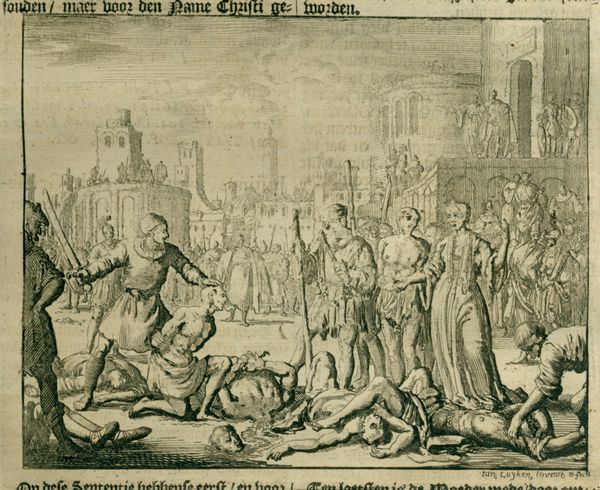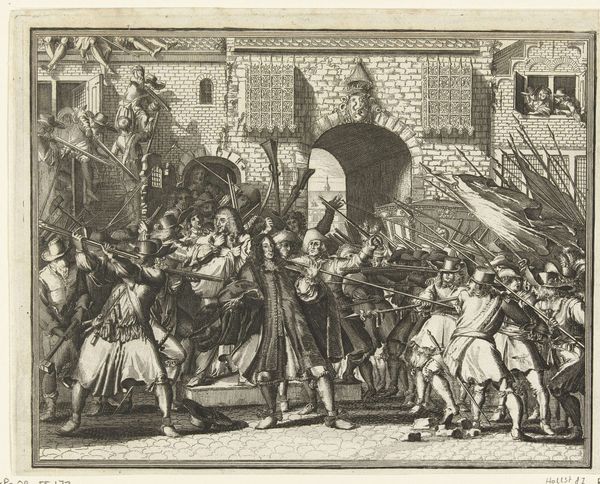
print, intaglio, engraving
#
narrative-art
# print
#
intaglio
#
old engraving style
#
mannerism
#
figuration
#
limited contrast and shading
#
pen work
#
history-painting
#
academic-art
#
engraving
Dimensions: height 328 mm, width 418 mm
Copyright: Rijks Museum: Open Domain
Editor: We're looking at Philips Galle's "Massacre of the Innocents," created sometime between 1557 and 1570. It's an engraving, and the scene is just… chaotic. There’s a sense of violence and desperation conveyed through the figures' exaggerated gestures. How do you interpret this work and its enduring impact? Curator: This image vibrates with symbolic meaning. Look at the architectural backdrop; it’s grandiose, Roman-esque, almost celebrating the power that enables such atrocities. Notice how the soldiers, instruments of power, are rendered with sharper lines compared to the soft, almost blurry depictions of the mothers and children. It evokes the brutal clash between merciless power and vulnerable innocence. Editor: I hadn't considered the contrast in the rendering of the figures themselves, only their positioning. The building looks stable while the mothers appear frantic. I see. So, is this commentary meant to warn the viewer about something? Curator: Possibly, as a cultural warning about the potential for cruelty inherent in unchecked authority. How does this visual representation of infanticide resonate with contemporary anxieties around power and vulnerability? Editor: Seeing it this way does make it more relevant. The use of a classical setting actually enhances that. Thank you! Curator: And considering that engravings allowed for the wide distribution of images, Galle’s “Massacre” becomes a potent and reproducible symbol of collective memory regarding oppression. It makes you think about what visual symbols persist, doesn't it?
Comments
No comments
Be the first to comment and join the conversation on the ultimate creative platform.


